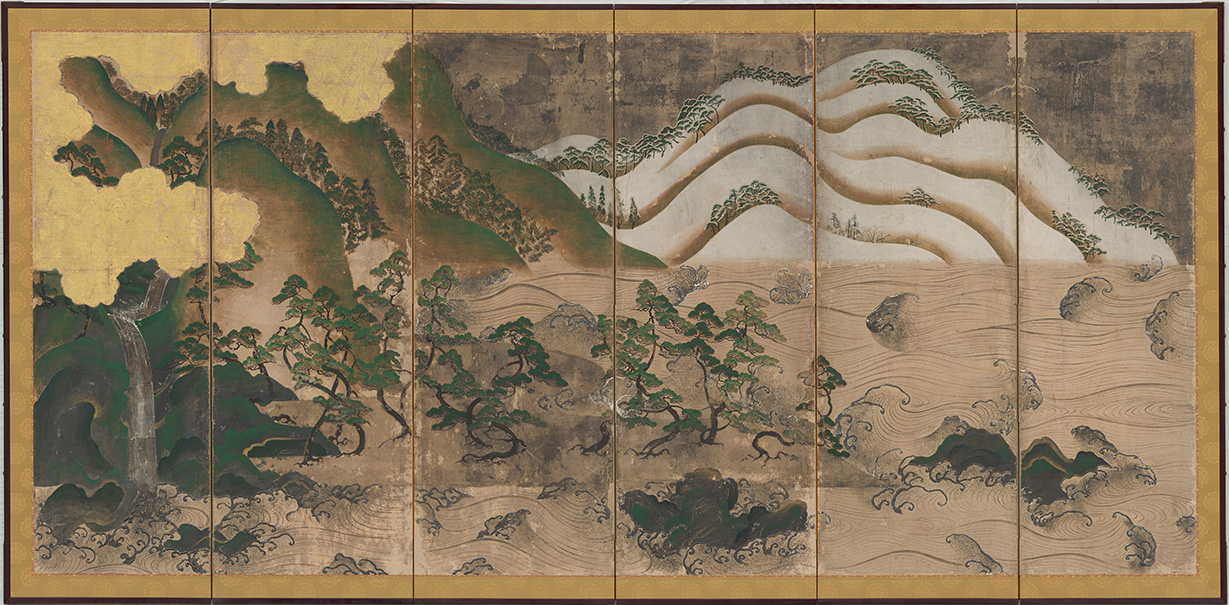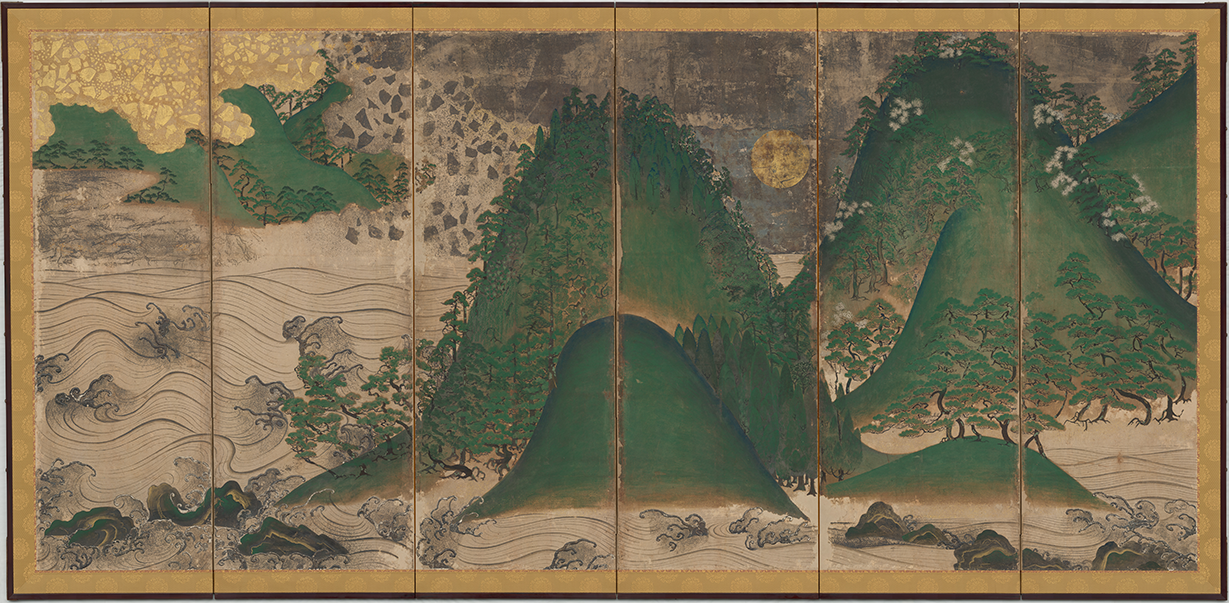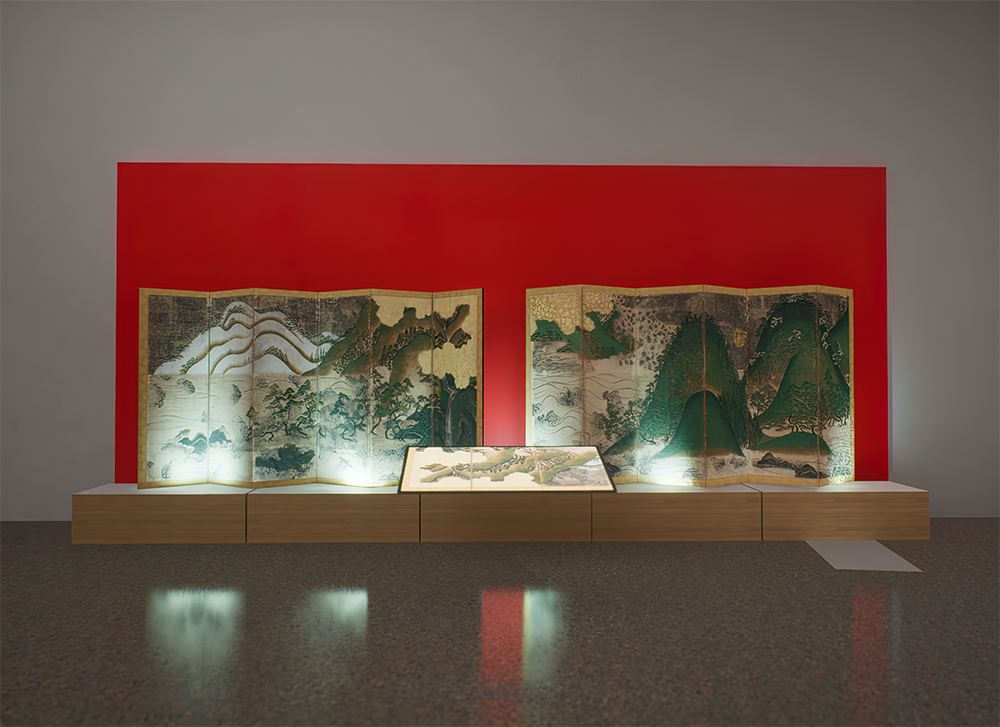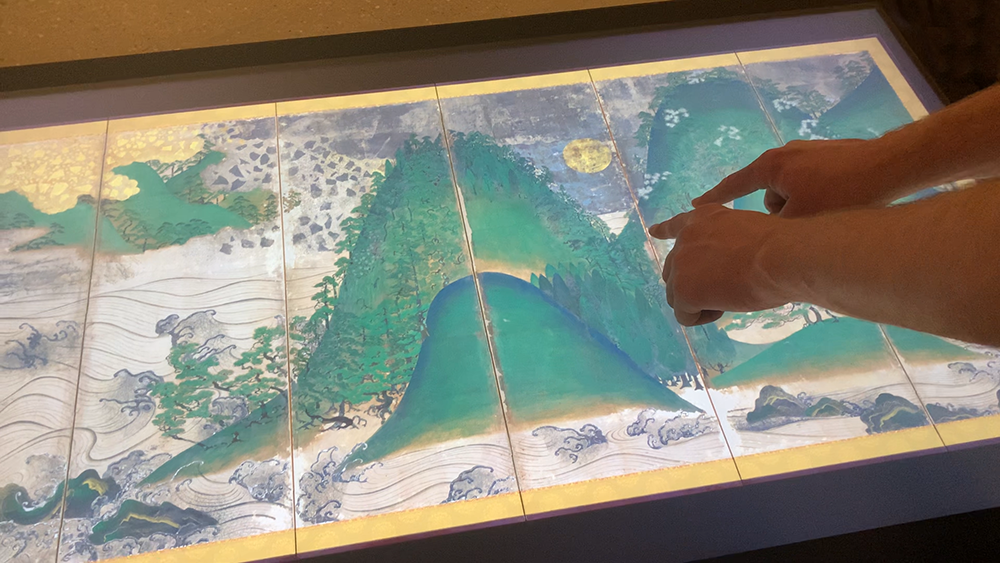Japanese National Treasure, late-15th century; replica 2021. Author unknown. Replica, 2021.
These two standing screens portray the classical Japanese understanding of the yearly seasonal cycle: the sun watches over spring and summer on the right screen, while the moon watches over autumn and winter on the left. A vast ocean occupies the centre of the composition, and the seasonal landscape seem to swirl around it. The scenic elements of the composition indicate the progression of the seasons through their yearly cycle. The sun hangs in the sky between spring and summer, as does the moon between autumn and winter. Clouds hover between summer and autumn as well as between winter and spring.
Scans of two standing screens, Landscapes of Four Seasons with Sun and Moon. Each screen 147 x 313.5 cm. Collection Kongo-ji Temple, Osaka, Japan. Facsimile: AITReC.


Kongoj-ji Temple was established in the mid-8th century by the priest Gyoki, on orders from Emperor Shomu. Imperial Princess Hachijo Nyoin later helped restore the temple after it had fallen into some disrepair. The temple consequently gained the nickname Nyonin Koya, or ‘woman’s Koya’, highlighting the unusual instance that women were allowed to worship at Kongoj-ji Temple, unlike at the important Enryaku-ji Temple on Mt. Koya in Kyoto. The screen was likely displayed on an altar during the performance of esoteric Buddhist rites.
The two facsimiles included in Deep Fakes: Art and Its Double were made from the 15th-century CE originals in Osaka’s Amanosan-Kongo-ji Temple, which is listed as a Japanese National Treasure. The screens were digitised using a non-invasive analytical imaging scanning technique for ultra-high resolution RGB and near-infrared data capture, subsequently printed at 1:1 scale of the original as a 2.5D (3D surface texture) on Japanese paper.

